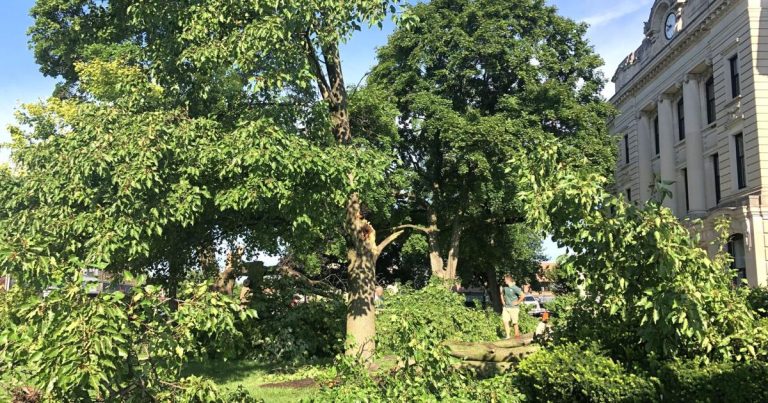With the derecho hitting our area this week, I know a lot of trees have damage to their limbs.
Purdue University's Department of Forestry offers these important reminders as you clean up after a storm.
With storm season approaching, one of the topics that concerns many people is tree damage. Depending on the intensity of the storm and the condition of the trees, damage from strong winds, heavy rainfall, and lightning can be severe. Broken or broken branches, stem failure, and root failure are some of the major concerns, but also the risk and liability of damage to people and property.
If your tree is damaged, there are steps you can take to deal with the situation. First and foremost, consider your own safety and the safety of others around you. Start by examining the tree from a distance, looking for the following:
• Ground heaving indicates potential root failure;
• Damage to branches and/or trunk;
• Hanging branches could fall to the ground, causing injury or death; and
• Pay attention to utilities and power lines. Trees that come into contact with live power lines may become energized. All utility lines should be considered live and hazardous.
If you find that your trees have been damaged by a storm, hiring an International Society of Arboriculture (ISA) certified arborist to perform a risk assessment will help guide your decisions on how to manage your trees.
To find an arborist near you and verify credentials, use the links at Find an Arborist, Trees are Good, or the International Society of Arboriculture (ISA). For more information, you can also check out the publication Trees and Storms located in the Purdue Extension Resource Center Education Store.
Alicia Rogers is the ANR educator for DeKalb County with Purdue University Cooperative Extension Service.
